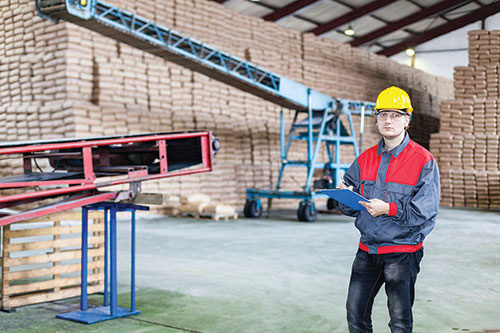Combustible dust hazards

Dust may look innocuous, but given the right circumstances, it can be deadly. According to OSHA, the Chemical Safety Board identified 281 combustible dust incidents between 1980 and 2005 that killed 119 workers, injured 718 and caused extensive damage. But what is combustible dust? And what hazards should you watch for?
According to the Canadian Center for Occupational Health and Safety, combustible dust is “any fine material that has the ability to catch fire and explode when mixed with air,” and can include solid organic materials such as sugar, flour and grain, and metals and non-metallic materials. CCOHS notes that the buildup of even a small amount of dust can result in a serious – and potentially deadly – incident.
Dust explosions have occurred in a variety of workplaces, including food plants, grain elevators, woodworking facilities and places where chemical manufacturing takes place. CCOHS states that fires need three elements to exist: fuel, oxygen and an ignition source. For a dust explosion to occur, two additional elements are needed: dispersion of dust in the right concentration level and confinement of that dust cloud. If all of these elements are in place, an explosion can take place.
CCOHS offers a variety of dust explosion preventive recommendations, including:
- Refrain from using brooms or compressed air to clean dust. Rather, use a vacuum approved specifically for dust collection. Be sure to clean “hidden” areas where dust can settle, including in ventilation shafts, on support beams and behind false ceilings.
- Avoid having flat, unused surfaces where dust can accumulate.
- Ensure your facility uses and maintains appropriate ventilation equipment and systems.
- Be aware that worn equipment, such as bearings, can generate heat and become an ignition source. Keep all equipment in good condition.
- Eliminate unnecessary sources of ignition, including heat sources, friction, sparks and open flames.

